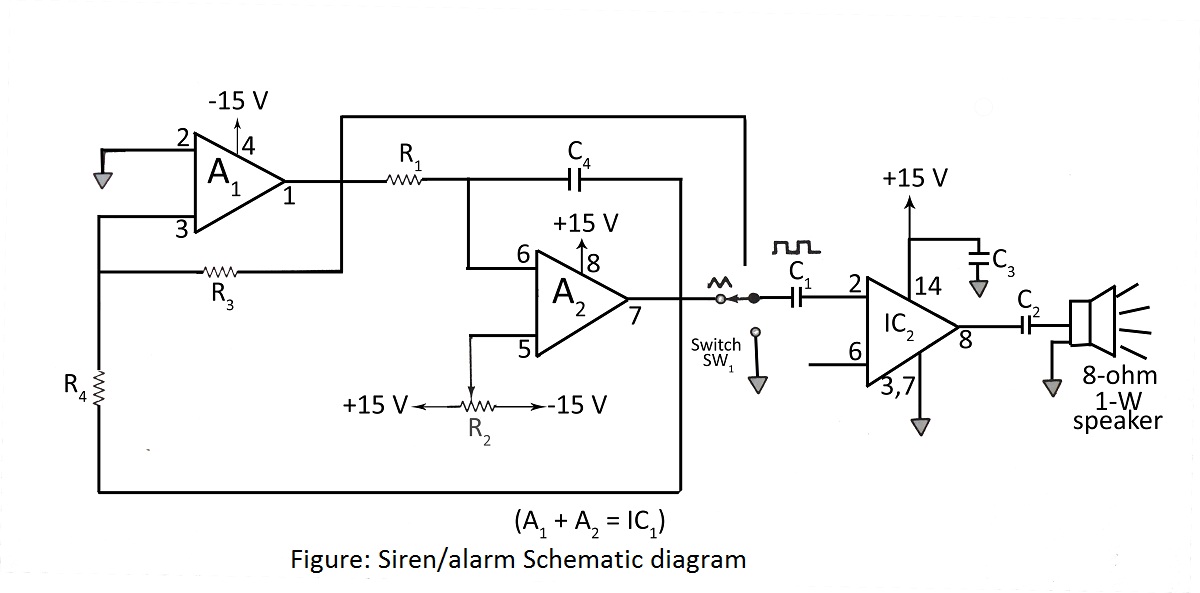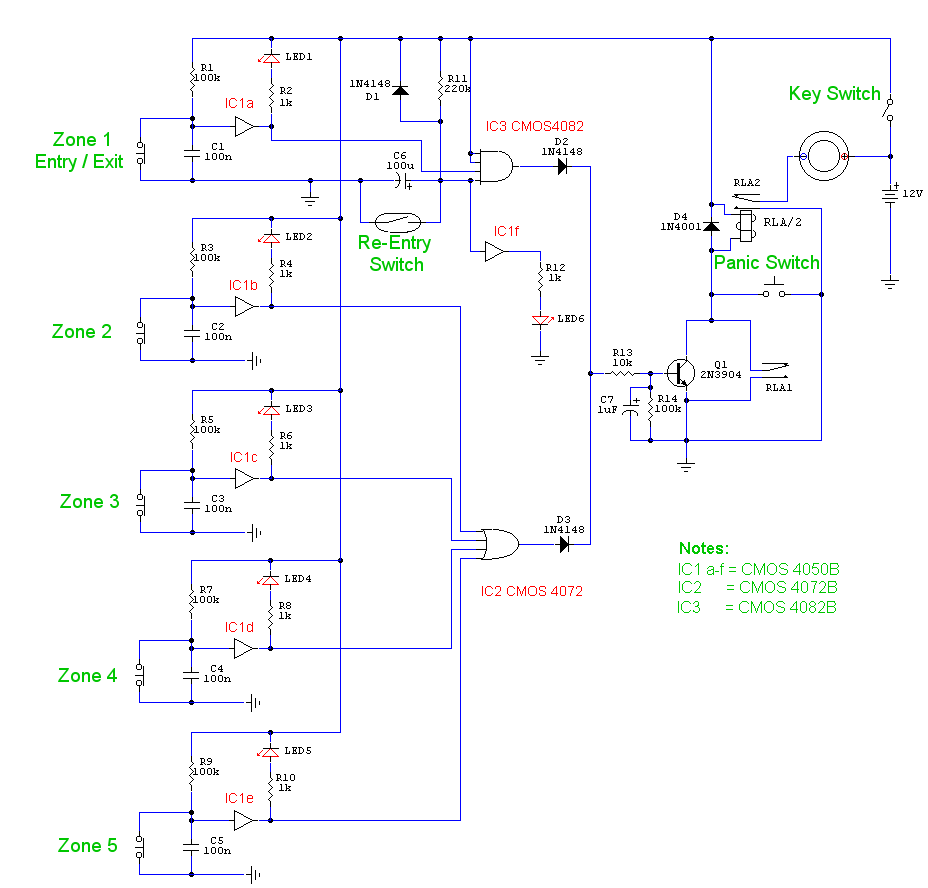
Warble-tone alarm

The circuit generates a warble-tone alarm signal that simulates the sound of a British police siren. IC1 is configured as an alarm generator, while IC2 operates as a 1 Hz astable multivibrator. The output from IC2 is utilized to frequency modulate IC1 through resistor R5. The output frequency of IC1 alternates symmetrically between 500 Hz and 440 Hz, completing one sound with each alternating cycle.
The circuit employs two integrated circuits (ICs) to create a distinctive warble-tone alarm, which mimics the characteristic sound of a British police siren. The first IC, designated as IC1, functions as an alarm generator. Its role is to produce a variable frequency output that simulates the siren's sound. The frequency modulation of IC1 is achieved through the second IC, IC2, which is configured as a 1 Hz astable multivibrator. This configuration allows IC2 to generate a square wave output at 1 Hz, which serves as the modulating signal for IC1.
Resistor R5 plays a crucial role in the circuit by connecting the output of IC2 to the input of IC1. This connection facilitates the modulation process, allowing the output frequency of IC1 to vary between 500 Hz and 440 Hz. The alternating output creates a distinctive sound pattern that is typical of a warble-tone alarm. Each complete cycle of the sound corresponds to the alternating frequencies, providing a clear and recognizable alarm signal.
In summary, the circuit effectively combines the functionalities of an alarm generator and a frequency modulator to produce a realistic simulation of a British police siren, utilizing simple components and a straightforward design approach. The alternating frequency output not only enhances the auditory effect but also ensures the alarm is attention-grabbing and effective in alerting individuals to potential hazards.The circuit generates a warble-tone alarm signal that simulates the sound of a British police siren. IC1 is wired as an alarm generator and IC2 is wired as a 1 Hz astable multivibrator. The output of IC2 is used to frequency modulate IC1 via R5. The action is such that the output frequency of IC1 alternates symmetrically between 500 Hz and 440 Hz, taking one sound to complete each alternating cycle. 🔗 External reference
The circuit employs two integrated circuits (ICs) to create a distinctive warble-tone alarm, which mimics the characteristic sound of a British police siren. The first IC, designated as IC1, functions as an alarm generator. Its role is to produce a variable frequency output that simulates the siren's sound. The frequency modulation of IC1 is achieved through the second IC, IC2, which is configured as a 1 Hz astable multivibrator. This configuration allows IC2 to generate a square wave output at 1 Hz, which serves as the modulating signal for IC1.
Resistor R5 plays a crucial role in the circuit by connecting the output of IC2 to the input of IC1. This connection facilitates the modulation process, allowing the output frequency of IC1 to vary between 500 Hz and 440 Hz. The alternating output creates a distinctive sound pattern that is typical of a warble-tone alarm. Each complete cycle of the sound corresponds to the alternating frequencies, providing a clear and recognizable alarm signal.
In summary, the circuit effectively combines the functionalities of an alarm generator and a frequency modulator to produce a realistic simulation of a British police siren, utilizing simple components and a straightforward design approach. The alternating frequency output not only enhances the auditory effect but also ensures the alarm is attention-grabbing and effective in alerting individuals to potential hazards.The circuit generates a warble-tone alarm signal that simulates the sound of a British police siren. IC1 is wired as an alarm generator and IC2 is wired as a 1 Hz astable multivibrator. The output of IC2 is used to frequency modulate IC1 via R5. The action is such that the output frequency of IC1 alternates symmetrically between 500 Hz and 440 Hz, taking one sound to complete each alternating cycle. 🔗 External reference





